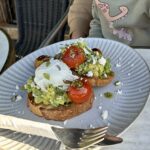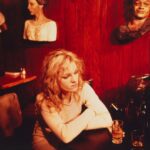Curtin University research has found that a native resin bee endemic to Western Australia is unique in using dry Banksia flowers and the fuzz of the Banksia cones in their nests, in urbanised parts of Perth.
The research, published in The Australian Entomologist, examined the differing characteristics and nesting habits of the specialised resin bee, Megachile ignita, in a bid to better protect its survival.
Author PhD student Kit Prendergast, from the School of Molecular and Life Sciences at Curtin University, said the research uncovered new information about the use of Banksia flowers in this native bee’s nesting habits.
“Through this study, we wanted to understand the nesting biology of these native bees, which are endemic to the South-West region of Western Australia, because the more we know about their nesting habits, the better chance we have of safeguarding their future,” Ms Prendergast said.
“I found that Megachile ignita is using dry flowers and the fuzz from Banksia cones in their nests. This is the first documented evidence of this material being used inside bee nests.
“Although previous research has focused on food sources, this study shows nesting materials are also important to the reproductive success of bees and it is the first documented evidence of dry flowers and the fuzz from Banksia being used inside bee nests, not as food.”
Ms Prendergast said the study monitored the offspring of Megachile ignita to determine the reproductive biology of this species, including how many offspring they produce, sex ratio, body size, and parasitism – all important information for conserving the species.
“My measurements of the offspring that emerged from the unusual nests of this species found that the males were significantly larger than their female counterparts, which contrasts with the general pattern in many insects,” Ms Prendergast said.
Through observations of this bee foraging in the field, and identification of pollen in its nests, this study also found that Megachile ignita is highly specialised in its diet, foraging only on native pea plants (family Fabaceae).
Ms Prendergast stressed the importance of protecting Australia’s native bee species, which for this special species means conserving Banksia trees because of its value to them.
“Protecting our native bees is important because they are part of our natural heritage, and are vital components of our ecosystems, playing important roles as pollinators, especially of our native wildflowers the biodiversity hotspot that the South-West region of Western Australia is renowned for,” Ms Prendergast said.
“I found that this species is highly reliant on a restricted set of native flora: native pea plants for food, and native Banksias to include in its nests. Many of these plants are only found in remnant bushlands around Perth, highlighting the need to protect these habitats from urban development.”
There is an estimated 2000 species of native bees in Australia, with many yet to be formally named and described.
The research paper ‘Nesting biology of Megachile ignita Smith 1853 (Hymenoptera: Megachilidae) in artificial nesting blocks in urbanised Western Australia’ can be viewed online here.



